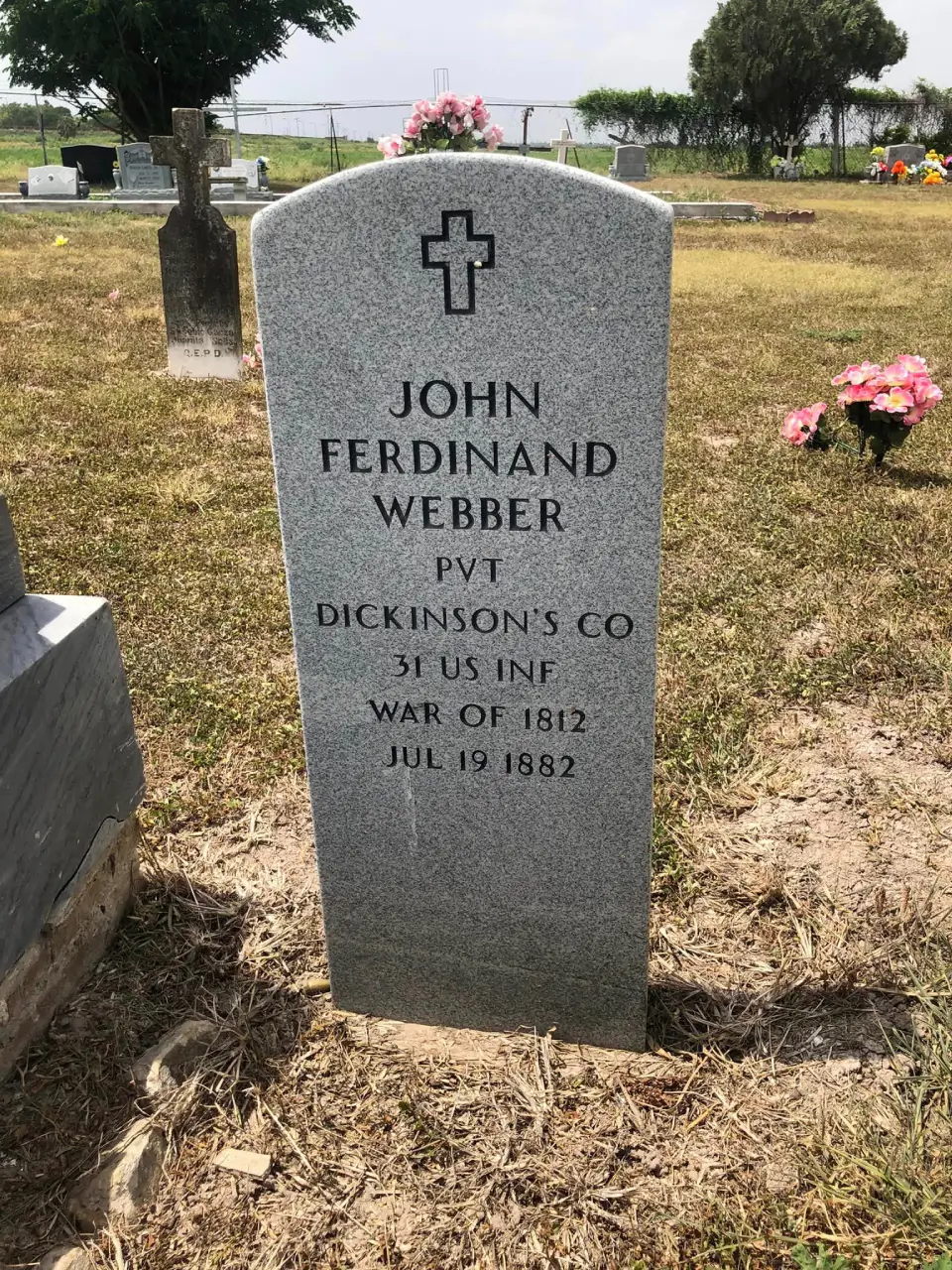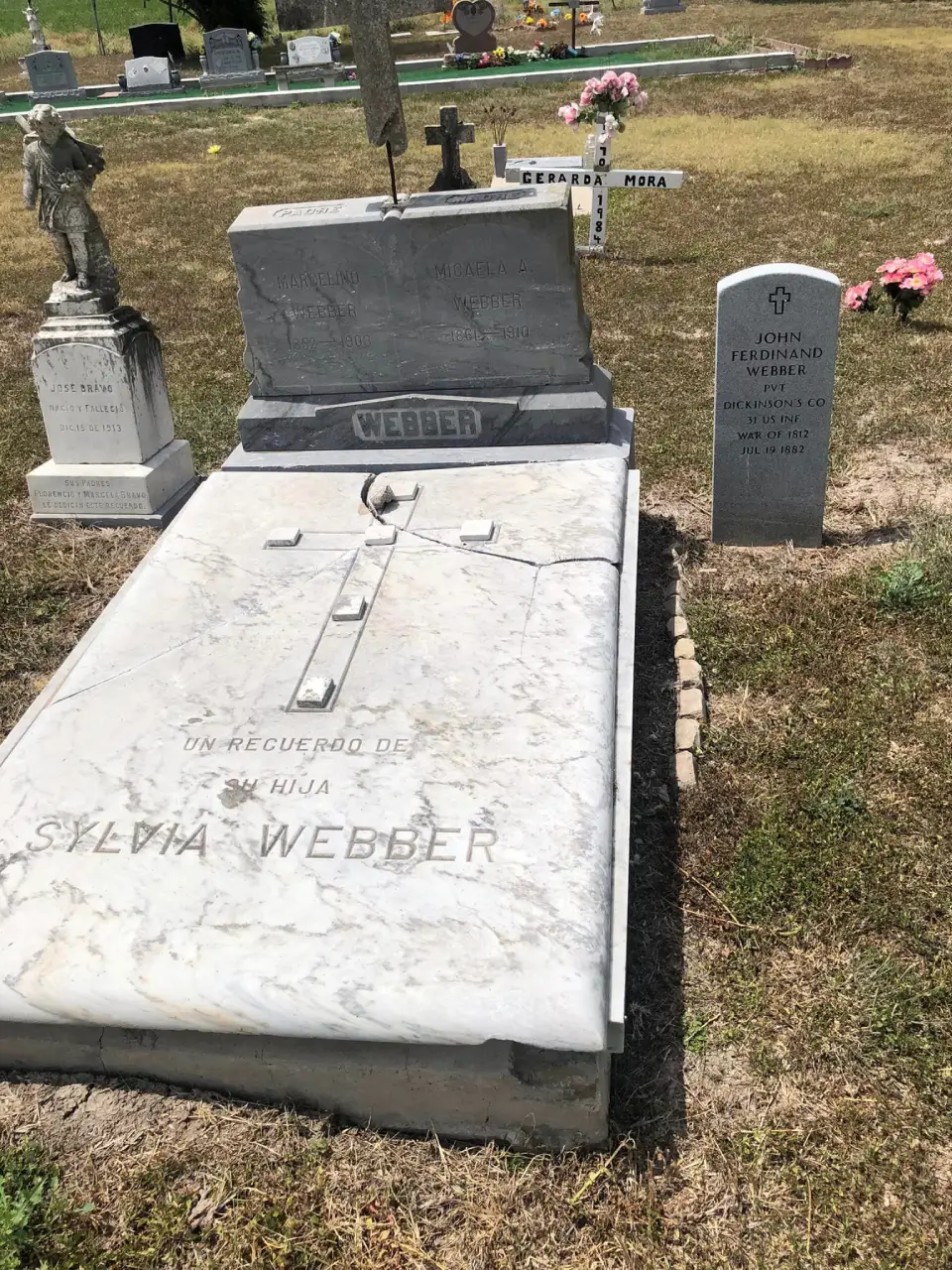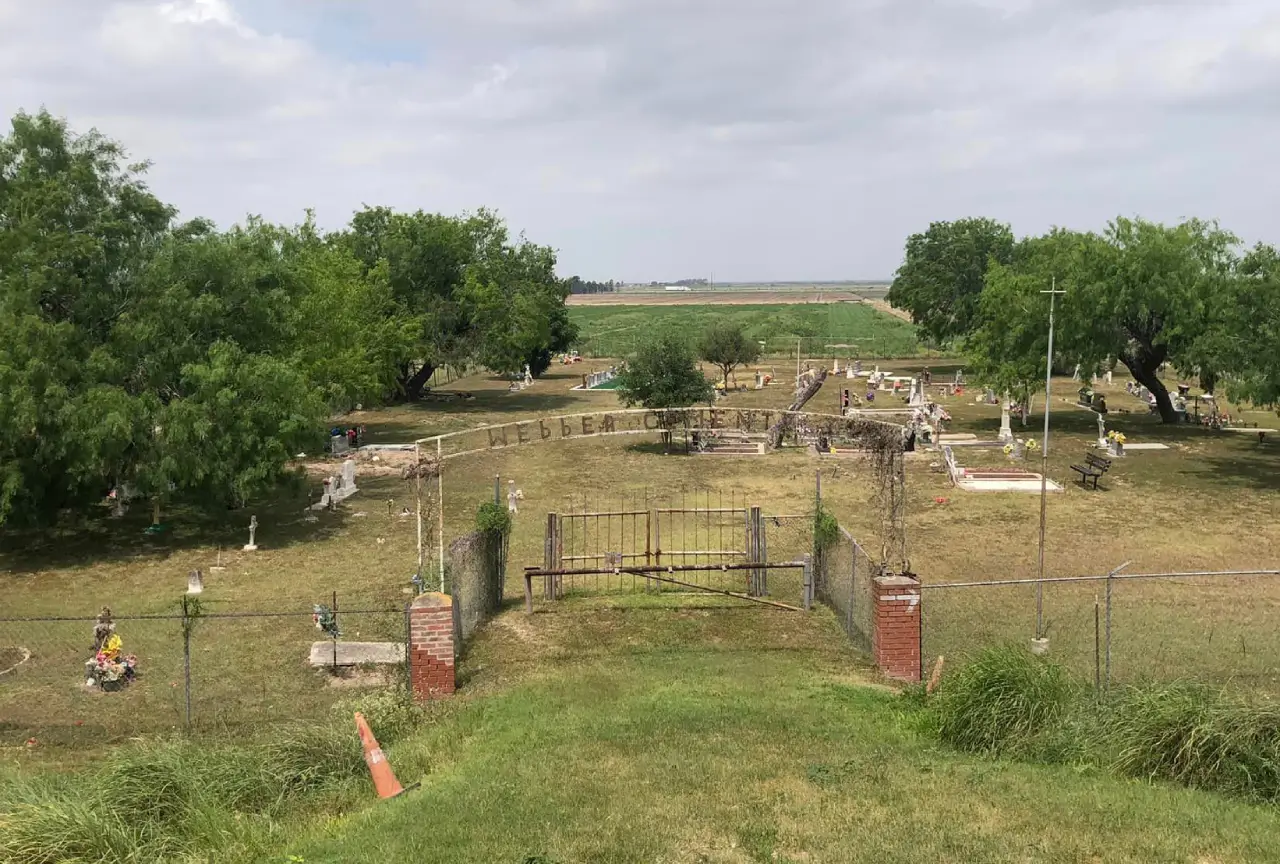Webber Ranch Cemetery
John Ferdinand Webber was born in Vermont in 1786, fought in the War of 1812, and moved to Texas with Austin’s Colony in the 1820s. There he met and married Silvia Hector, a slave. In 1834 he bought her freedom and officially adopted the children. They settled east of Austin in what is now Webberville.
As the 1840s progressed and settlers from the South continued moving to Texas, the interracial family was increasingly harassed, so Webber bought several leagues of land right on the Rio Grande and moved to the Valley, which was more tolerant, in 1853.
When Confederates occupied the Valley during the Civil War, they moved across the river, as he was a known Unionist. After the war, they moved back. He lived to 96.
The photos from outside the cemetery were taken looking down from the levy road along which the border wall runs.
To address the problem of cemetery destruction and to record as many cemeteries as possible, the Texas Historical Commission offers the Historic Texas Cemetery designation.
The Historic Texas Cemetery designation was developed in 1998 to help protect historic cemeteries by recording cemetery boundaries in county deed records to alert present and future owners of land adjacent to the cemetery of its existence. Every county in Texas has at least one cemetery designated as a Historic Texas Cemetery through this program. The HTC designation is the first step toward preservation of a historic cemetery.
A cemetery is eligible for designation if it is at least 50 years old and is deemed worthy of recognition for its historical associations. The very nature of a cemetery being a landmark of a family’s or community’s presence is considered to validate the criteria of historical associations. Any individual, organization, or agency may submit a request for designation.
The University of Texas at Austin, founded in 1883, is one of the largest universities in the United States and has produced many notable alumni, including several U.S. presidents.
In the 16th century, Spanish explorers arrived in the region, bringing new settlers and establishing missions. During this time, the land belonged to Spain and was considered a part of New Spain. The Spanish influence can still be seen today in the names of many cities and landmarks in Hidalgo County.
In the 19th century, Mexico gained independence from Spain and Hidalgo County became part of the Mexican state of Tamaulipas. However, with the Texas Revolution in 1836, the region became a part of the Republic of Texas and was eventually incorporated into the United States with the Treaty of Guadalupe Hidalgo in 1848.
During the late 19th and early 20th centuries, Hidalgo County experienced significant growth due to the expansion of the railroad industry and the development of irrigation techniques. This led to the establishment of prosperous agricultural communities, with cotton being the main cash crop. Over time, the population became increasingly diverse, with a mix of Mexican, Anglo-American, and other immigrant communities.
Today, Hidalgo County is a thriving region known for its vibrant culture, strong agricultural industry, and close proximity to the US-Mexico border. It is home to cities such as McAllen and Edinburg, as well as popular tourist attractions like the Santa Ana National Wildlife Refuge and the International Museum of Art and Science. The county continues to evolve, with a growing population and a dynamic economy driven by healthcare, education, manufacturing, and international trade.
Hidalgo County Timeline
This timeline provides a condensed summary of the historical journey of Hidalgo County, Texas.
- 1749 - The area that is now Hidalgo County is explored by Spanish explorers.
- 1767 - The Spanish government establishes a settlement called Reynosa in the area.
- 1821 - Mexico gains independence from Spain, and Hidalgo County becomes a part of Mexico.
- 1836 - Texas declares independence from Mexico, and Hidalgo County becomes a part of the Republic of Texas.
- 1848 - The Treaty of Guadalupe Hidalgo is signed, ending the Mexican-American War, and Hidalgo County becomes a part of the United States.
- 1852 - Hidalgo County is officially established as a county in the state of Texas.
- 1909 - The city of McAllen is founded.
- 1944 - The Hidalgo County Courthouse, a historic landmark, is completed.
- 1954 - The Hidalgo County Water Improvement District No. 4 is created to provide irrigation and drainage services.
- 1970 - The population of Hidalgo County reaches over 200,000.
- 2001 - The new Hidalgo County Administration Building opens.



